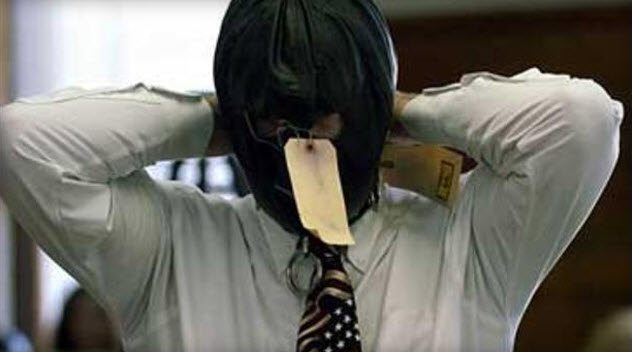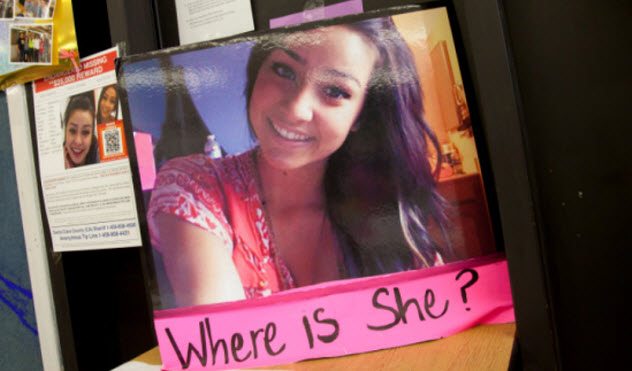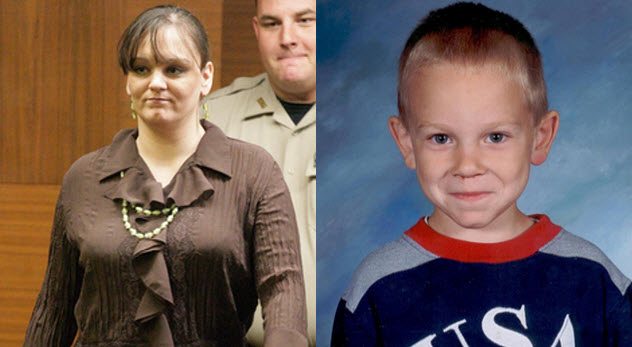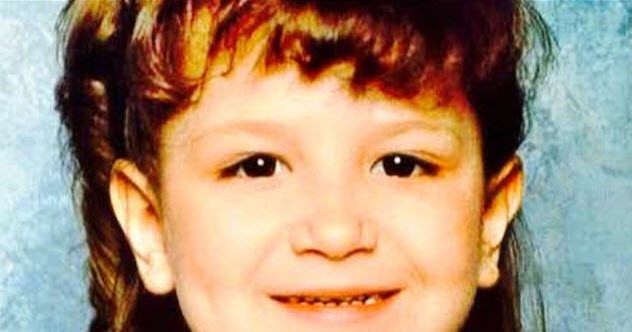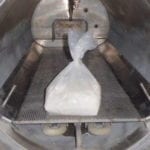However, the translation is often misinterpreted, causing many to think that murder cannot be proven in the absence of a corpse. As a result, many criminals believe that they cannot be charged with murder if the body is never found. Although ‘no body’ murder trials are more difficult to prove because they rely on circumstantial evidence, advances in forensic science make it easier to prove that a murder has occurred even if the body has not been found.
10 Barbara Asher
Barbara Asher, 56, worked as a dominatrix, running an S&M dungeon from her condominium in Quincy, Massachusetts. In July 2000, one of her clients, 53-year-old Michael Lord, went missing. An investigation revealed that he was last seen by Asher. During questioning, she admitted to police that the two had met at her home for a bondage session on the day Lord vanished. But she denied any involvement in his disappearance. After a lengthy interrogation, Asher was arrested and charged with manslaughter. The prosecution presented the jury with their theory: Lord had suffered a heart attack while tied to a bondage table as Asher stood by, doing nothing to help him. She then called her boyfriend to help her dispose of the body. The couple dismembered the body and dumped it behind a restaurant. Investigators testified that Asher confessed to the crime but only after they turned off the tape recorder. The defense was able to raise reasonable doubt, citing lack of physical evidence that proved Lord was actually dead. There was also no blood or DNA evidence found in Asher’s bathtub, where the dismemberment allegedly took place. After deliberating for eight hours, the jury found Asher not guilty. Though the police have conducted several searches, Lord’s body has never been found.[1]
9 Rex Nisbett
Rex and Vicki Nisbett of Williamson County, Texas, were high school sweethearts who married at a young age. In 1991, Vicki filed for divorce and moved into an apartment with their three children. With Christmas approaching, she agreed to let Rex stay with her and the kids over the holidays. On December 14, Vicki, 29, had plans to attend her company’s Christmas party. When she failed to return home, Rex called one of her coworkers and found out that Vicki had never made it to the party. He contacted police and filed a missing persons report. Investigators learned that neighbors had heard the couple arguing on the day that Vicki disappeared. She had also talked to a coworker on the phone, saying that Rex had choked her. A month earlier, he had been arrested for assaulting his estranged wife. Though police suspected foul play, they did not have a body or enough evidence to charge Rex. That changed in 2013 when advances in DNA analysis revealed that the blood found in the apartment belonged to both Vicki and Rex. In 2014, Rex, 55, was found guilty of murder and sentenced to 42 years. In 2016, the appeals court acquitted him of all charges, citing lack of evidence.[2] If Vicki’s body is ever found, he cannot be tried again for her murder due to double jeopardy laws.
8 Timothy Culham
Hugh Sinclair, 72, was an eccentric antiques collector. He was last seen by his neighbors on July 7, 1997. His family reported him missing a few weeks later after they were unable to contact him. When police arrived at his upscale apartment in Toronto, neighbors said they had noticed a foul smell coming from Sinclair’s unit. Once inside, police found blood on the walls, closet, and hallway. There were no signs of the silverware and antique furniture that had once filled his apartment. Investigators soon turned their attention to Timothy Culham, 27, an antiques dealer and friend of Sinclair. Culham had acquired debts due to his gambling addiction and, after Sinclair’s disappearance, had sold some of the senior’s antiques to local dealers. Police also found DNA that matched Sinclair’s in the trunk of Culham’s rental car. He was arrested and charged with first-degree murder. Though there was no body or murder weapon, the jury found that there was enough evidence to convict Culham of murder.[3]
7 Robert Baltovich
On June 19, 1990, Elizabeth Bain, 22, disappeared after heading to campus at the University of Toronto. Her bloodstained car was found three days later. Immediately after this discovery, her boyfriend, Robert Baltovich, became the main suspect. The theory was that he murdered his girlfriend in a fit of jealous rage and used her vehicle to dispose of the body. On November 19, Baltovich was arrested and charged with first-degree murder. Without a body, the prosecution’s case relied heavily on eyewitness testimony. During the trial, the defense called their own witnesses who testified to seeing Bain with a blond-haired man shortly before she vanished. This description matched that of the Scarborough Rapist (now identified as Paul Bernardo), who was terrorizing the area back then. On March 31, 1992, Baltovich was found guilty of second-degree murder and sentenced to life in prison. In 2004, the Ontario Court of Appeal set aside Baltovich’s conviction, citing insufficient evidence and improper instructions to the jury. In 2008, he was acquitted.[4] Baltovich has launched a $13 million malicious prosecution lawsuit. While gathering information for the civil suit, his lawyers discovered that vital information which cast doubt on Baltovich’s guilt was not turned over to the defense.
6 Travis Vader
On July 3, 2010, Lyle McCann, 78, and his wife, Marie, 77, were last seen getting fuel for their motor home in St. Albert, Alberta. Their burned-out RV was found abandoned a few days later. They were reported missing by their daughter on July 10 when they failed to reach their destination in Abbotsford, British Columbia. Investigators received information that Travis Vader, 38, had been seen driving an SUV that matched the description of the one that the McCanns had been seen towing. Records also showed that the couples’ cell phone had been used to call Vader’s ex-girlfriend. DNA tests would later link him to the crime scene. In 2011, a judge officially declared the McCanns as deceased. The Royal Canadian Mounted Police believed that Vader, a drug addict who was desperate for money, had killed the couple during a robbery attempt. In 2012, Vader was charged with first-degree murder. A mistrial was declared when it was discovered that evidence had not been turned over to the defense. In 2016, Vader was found guilty of manslaughter and received a life sentence.[5] He’s eligible for parole in seven years. The McCann children have begged the convicted killer to disclose the location of their parents’ bodies, but these pleas have gone unanswered.
5 Antolin Garcia-Torres
On the morning of March 16, 2012, Sierra LaMar, 15, hugged her Mom goodbye, left her home in Morgan Hill, California, and headed to the bus stop. She was never seen again. Days later, her book bag and cell phone were found by search and rescue. DNA from these items led police to a suspect, Antolin Garcia-Torres. He was arrested two months later after police found the teenage girl’s DNA in his vehicle. In 2014, Garcia-Torres was indicted by a grand jury on kidnapping and murder charges involving Sierra and on additional kidnapping charges for three women in 2009. After several years of delays by the defense, his trial began in January 2017. The trial has played out like a chess match, with the prosecution presenting DNA evidence implicating the defendant in this heinous crime and the defense attempting to discredit their findings by arguing that police mishandled and contaminated the evidence.[6] The defense contends that Sierra is alive and ran away to escape her troubled home life. To support their theory, they point to the fact that her father, Steve LaMar, a registered sex offender, was convicted in 2009 of molesting his daughter’s friends during sleepovers. If convicted, Garcia-Torres, 25, could face the death penalty. If acquitted, he can never be tried again, even if Sierra’s body is eventually found.
4 Katherine Rutan
When six-year-old Logan Tucker went missing, he was living with Katherine Rutan, his mother, and Justin Daggett, his four-year-old brother, in the residence of Melody Lennington, his mother’s roommate, in Fort Supply, Oklahoma. On June 23, 2002, Melody awoke in the middle of the night to the sound of Logan screaming and crying. After being told the boy was sick, she went back to bed. When Melody woke up for work three hours later, Katherine said that Logan was still sick and was sleeping in the basement. He was never seen again. For the next several days, Katherine gave conflicting stories about Logan’s whereabouts. On July 7, family members contacted police to request a welfare check. When deputies arrived, Katherine told them that Logan was camping with her brother. Unable to confirm her story, police conducted a search of Katherine’s vehicle and residence. In the basement, they found masking tape with hair stuck to it and what appeared to be blood on it. In 2006, Katherine was charged with murder. During the trial, the most damning testimony came from Justin, who stated that his mother had carried Logan to the car and that he was pale, slumped over, and not moving.[7] She placed tape over Logan’s eyes and mouth before they drove to an abandoned house, where she left Logan’s body. When she returned to the car, she told Justin that his brother was never coming home. Katherine was sentenced to life in prison without the possibility of parole. Her lawyers are appealing the verdict. Despite several searches, police and volunteers have not recovered Logan’s body.
3 Robert Guevara
On June 1, 1992, Corrine Erstad, 5, left her home in Inver Grove Heights, Minnesota, to go to the park located a few yards from her residence. When she failed to return home, her parents reported her missing. A search for the girl yielded no results. After interviewing family and friends, police turned their focus to Robert Guevara, 24, a longtime friend of Corrine’s mother, Mona Williams. Guevara was a heavy drinker, and he often slept in the family’s basement on nights when he was too drunk to drive home. On several occasions, he slept in the same bed as the five-year-old. After obtaining a warrant, police searched Guevara’s van and rental locker. They found blood on the seat of his vehicle. Inside his locker, they found Corrine’s bloodstained sundress and a bloodied shower curtain. Tests revealed that the DNA was consistent with Corrine and Guevara. He was arrested and charged with kidnapping and murder. Defense attorneys told the jury that the evidence was planted in an attempt to frame their client. At the time, DNA technology was relatively new and Minnesota law did not allow its use as the basis for a conviction on these charges.[8] Guevara was found not guilty. In early 2017, Robert’s brother, Jerry Guevara Jr., 52, was arrested for sexually assaulting a minor. Police are hoping that his arrest can provide new insight into the cold case of Corrine Erstad.
2 Samantha Heiges
On January 1, 2007, a man walked into the Burnsville, Minnesota, police station and told officers a shocking story. The woman he was dating, 22-year-old Samantha Heiges, had confided that she drowned her baby in May 2005. When police interviewed Heiges, she broke down and confessed to the crime. She said that, after giving birth, she had held her baby underwater until the infant’s body went limp. Then Heiges placed the newborn inside a shoebox and tossed it down a garbage chute. Heiges told officers that the infant’s father, Erik Matlock, forced her to do it. During the trial, a friend testified that Heiges had told her weeks before the birth that she and her boyfriend planned to go to a cabin, kill the baby, and bury it in the woods. The defense painted Heiges as a battered woman, saying that Matlock regularly abused her and tried to force a miscarriage by starving Heiges and force-feeding her alcohol. When Matlock, 23, took the stand, he denied any involvement. He said that he woke up one night to discover Samantha standing naked in the bedroom, dripping with water and telling him that it was done. When he went into the bathroom, there was blood everywhere. Samantha told him that she had miscarried.[9] Heiges was convicted of second-degree murder and received a sentence of 25 years. Matlock was scheduled to go to trial on charges of second-degree murder and aiding an offender, but those charges were dropped after Heiges refused to testify against him.
1 Keli Lane
Keli Lane was a water polo player whose ambition was to represent Australia in the 2000 Olympic Games. That dream was cut short when she was arrested for murdering her newborn baby, Tegan. In 1999, Lane, 24, became pregnant. After being denied an abortion, she decided to put the baby up for adoption. She told social workers that this was her first child and that Duncan Gillies was the father. While completing a standard background check on Lane, the Department of Community Services made a shocking discovery: This was not her first child. Hospital records indicated that Lane had given birth twice before. In 1995, she had given birth to a baby girl who was immediately put up for adoption. In 1996, she had another daughter, who was named Tegan according to hospital records. Since this child was not listed as being placed for adoption and Lane denied having any children, police were contacted to investigate. Lane told police that she had placed Tegan with a family in Perth. When pressed for details, she changed her story, telling investigators that the child was with her father, a man by the name of Andrew Morris or Norris. (Lane wasn’t sure which).[10] After an investigation, police concluded that Andrew was fictional. Their suspicions grew when Lane’s friends and family revealed that they never knew about any of her pregnancies. Investigators conducted several searches. But when no trace of Tegan could be found, they determined that the child was dead. In 2009, the director of public prosecutions charged Lane with murder. Though the case was entirely circumstantial, Lane was found guilty of murder and sentenced to 18 years in prison. She’s eligible for parole in 2023.
